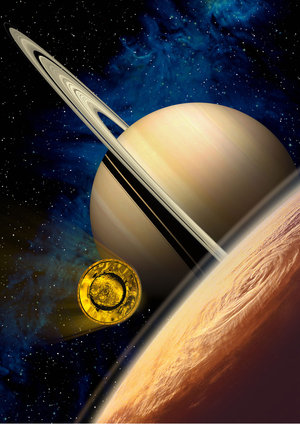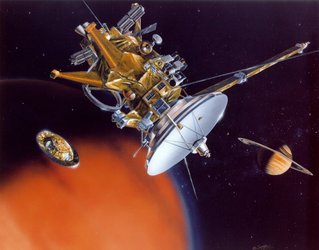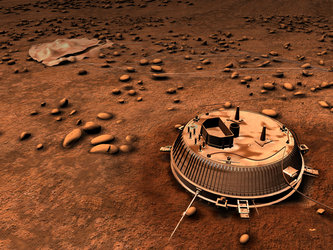Successful 'getaway' for Cassini
The NASA/ESA/ASI Cassini spacecraft successfully performed a 'getaway' manoeuvre on 28 December to keep it from following the ESA Huygens probe into the atmosphere of Saturn's moon Titan.
This manoeuvre established the required geometry between the probe and the orbiter for radio communications during the probe descent on 14 January. The probe has no navigating capability, so the Cassini orbiter had been placed on a deliberate collision course with Titan to ensure the accurate delivery of the probe.
The Huygens probe successfully detached from the Cassini orbiter on 25 December. All systems performed as expected. The Huygens probe will be the first human-made object to explore on-site the unique environment of Titan, whose chemistry is thought to be very similar to that of early Earth before life arose.
Next for Cassini is a fly-by of Saturn's icy moon Iapetus on 31 December. Iapetus is Saturn's two-faced moon - one side is very bright, and the other is very dark. One scenario for this striking difference is that the moon's surface is being resurfaced by some material spewing from within.

The Cassini-Huygens mission has been in orbit around Saturn since 1 July 2004, and has returned stunning pictures of Saturn, its rings and many moons.
Titan has already been the subject of two close fly-bys by Cassini. With 43 more fly-bys planned and the in situ measurements made by the probe, it is likely only a matter of time before Titan's secrets begin to unfold.
Credits: NASA/JPL/Space Science Institute















 Germany
Germany
 Austria
Austria
 Belgium
Belgium
 Denmark
Denmark
 Spain
Spain
 Estonia
Estonia
 Finland
Finland
 France
France
 Greece
Greece
 Hungary
Hungary
 Ireland
Ireland
 Italy
Italy
 Luxembourg
Luxembourg
 Norway
Norway
 The Netherlands
The Netherlands
 Poland
Poland
 Portugal
Portugal
 Czechia
Czechia
 Romania
Romania
 United Kingdom
United Kingdom
 Slovenia
Slovenia
 Sweden
Sweden
 Switzerland
Switzerland





























